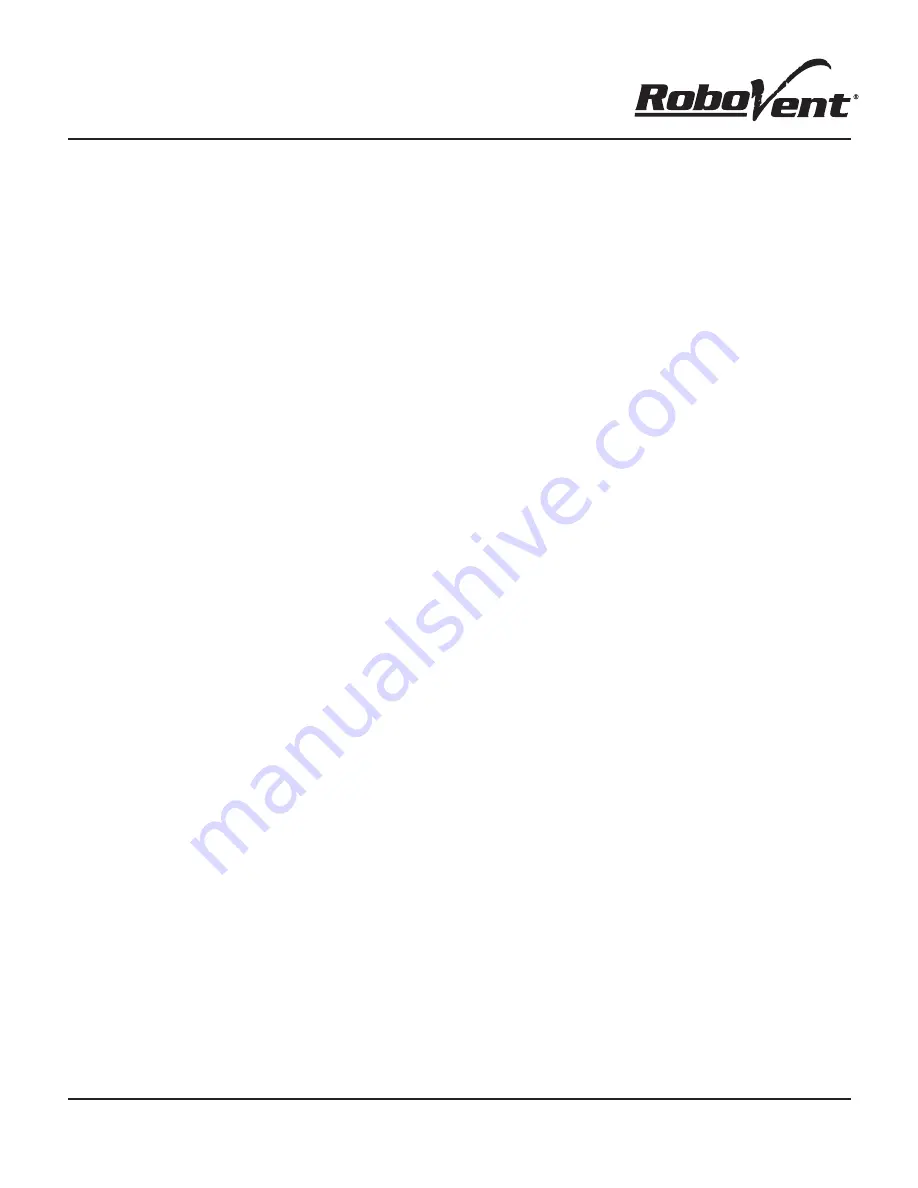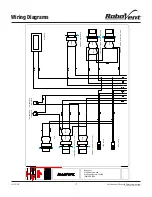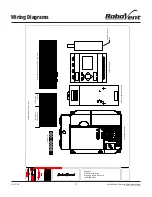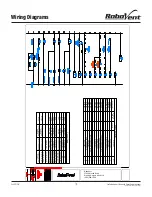
ProCube Owner's Manual & Operating Instructions
E2-20171010
©2017 ROBOVENT PRODUCT GROUP, INC.
11
Testing & Commissioning
Once unit has been connected to power and compressed air, it is important
to verify the machine is operating correctly and adjust airflow to ensure
effective capture.
Record details of setup and settings through pictures and notes. Keep
these on file with a logbook for daily checks.
Verify Machine Operation
Perform these quick checks to verify machine is running correctly:
1. Turn unit on. Listen for blower to ramp up and level off at running
speed. Watch that gauges operate.
2. Flip gun switch. Listen for a change in motor speed.
3. Put your hand over the intake and hold. Unit should display yellow
light and start alarm.
4. Press the pulse button, listen for a rush of air inside the filter cabinet
indicating the pulse valve has opened.
5. Once the function has been confirmed, testing and adjustment can be
performed.
Adjusting Airflow
Speed adjustments will need to be set for both one-gun and two-gun
settings. The intake that is more commonly used should be connected to the
top inlet and intermittent or ‘lesser-use’ intake should be connected to the
bottom inlet, to allow the plug to be used on bottom inlet in one-gun mode.
When using two intakes, additional balancing may be required if there are
any differences in hose length, fume gun setup or intake design. In these
cases, install a 50mm ball valve (refer to instructions below). To avoid ad-
ditional balancing, it is best to locate the machine centered between work
areas and use identical hoses and intakes / fume guns.
Follow these steps to adjust the speed for one- and two-gun settings:
1. Switch to the two-gun setting and turn the machine on.
2. Compare the airflow at each inlet. The inlet with greater airflow will
need a ball valve installed.
• In the case of fume guns, compare the air flow meters side-by-
side; the gun with more flow will need a ball valve.
• When using a fume gun in conjunction with a hood-type inlet, the
hood will need the ball valve. With flow starting at 100%, adjust
the ball valve on the hood until the fume gun has reached target
flow.
3. Once the intakes are balanced, adjust right speed dial until required
flow is achieved.
4. Now, detach the second intake and plug the lower inlet.
5. Switch to one-gun setting. Measure airflow at the intake and adjust
as needed.
Once settings have been determined, record the position of speed dials
and the resulting air flow or pressure at each intake. Daily readings must
be taken and compared to these values to ensure flow is maintained.
As the filter loads, it may become necessary to increase motor speed to
achieve the airflow originally set. Generally, this adjustment is not required
unless it is 20% different from the setup value.
Installing Ball Valve
1. Use a ball valve for 50mm plastic pipe with slip joint connection.
2. Cut two lengths of pipe at 100mm.
3. Glue pipes into valve.
4. Cut hose where ball valve will not cause the hose to pull out of any
connection on cause kinking. Which hose to cut is determined in
"Adjusting Airflow" instructions above.
5. Fit hose over pipe stubs on either side of ball valve and use hose
clamps to seal.
6. Now, adjustment of the ball valve will modify restriction and allow
airflow to be balanced.
Fume Guns
Fume guns are a delicate balance between having enough airflow to cap-
ture the fume and not drawing away shielding gas. Below are a few tips:
• Areas of a weldment that are tight or partially enclosed can allow the
suction to project throughout that volume or along the material and
begin to draw away shielding gas. Changing the nozzle to a design
suited for these applications is recommended if porosity occurs
consistently.
• On right angles, a different nozzle is typically not necessary. Often,
adjusting the angle of the nozzle during so intake ports are further
away from the material is enough to correct porosity issues.
• Gas flow should be within recommendation specified by the fume
gun manufacturer. Outside of this range can cause inconsistencies in
the weld or capture.



















